Linking DataFrames
Cleaning Data in Python

Adel Nehme
VP of AI Curriculum, DataCamp
Record linkage
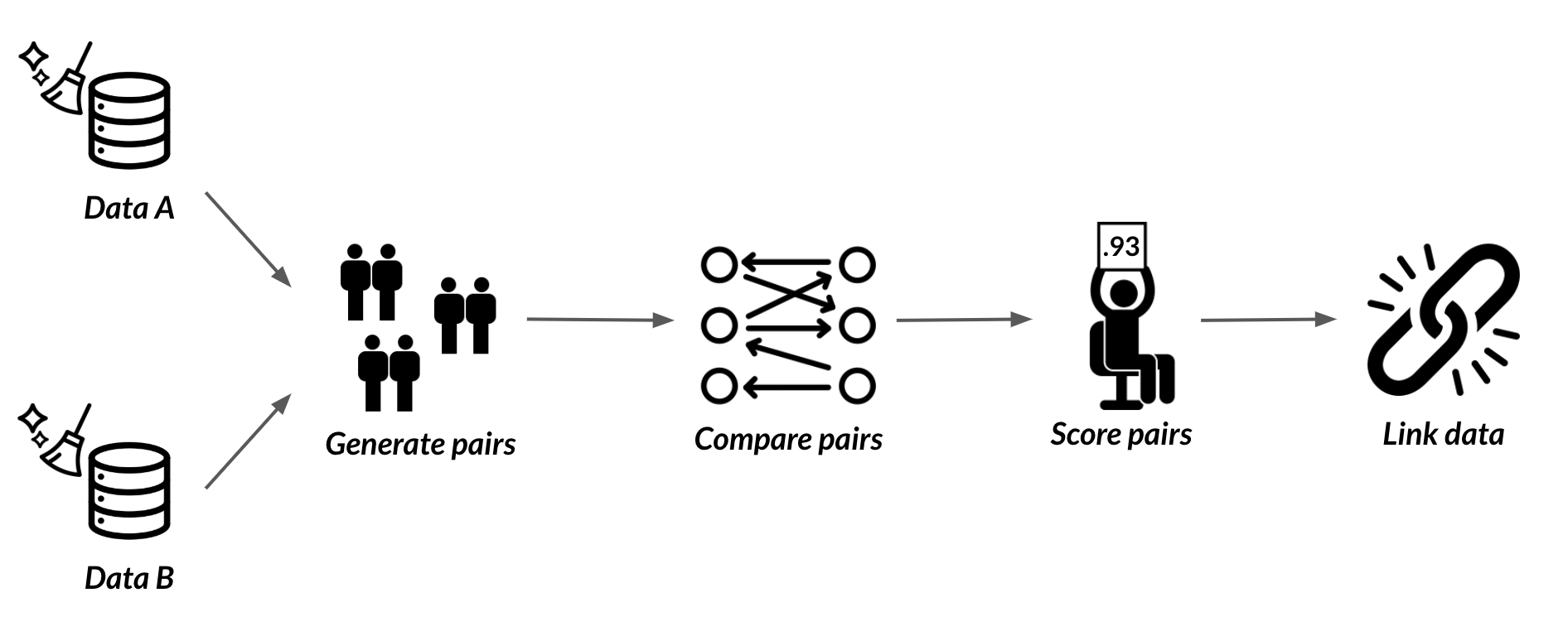
Record linkage
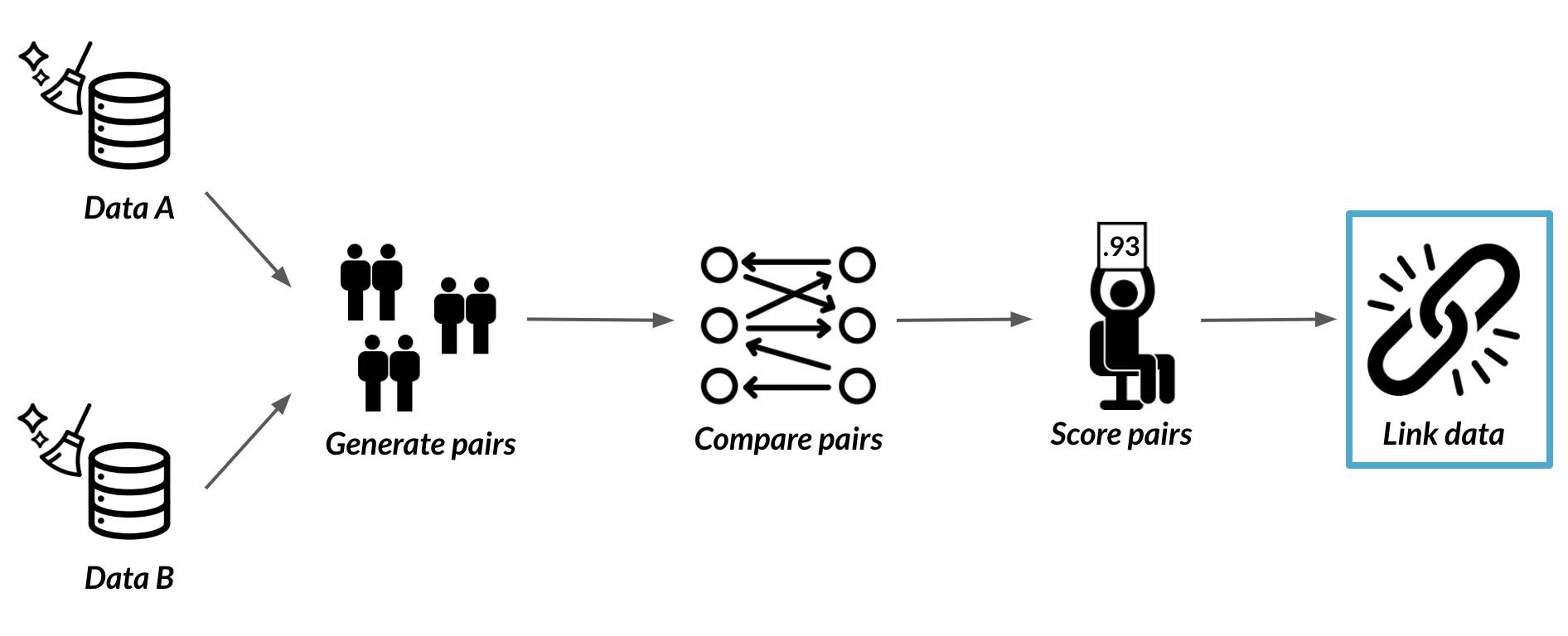
Our DataFrames
census_A
given_name surname date_of_birth suburb state address_1
rec_id
rec-1070-org michaela neumann 19151111 winston hills nsw stanley street
rec-1016-org courtney painter 19161214 richlands vic pinkerton circuit
...
census_B
given_name surname date_of_birth suburb state address_1
rec_id
rec-561-dup-0 elton NaN 19651013 windermere vic light setreet
rec-2642-dup-0 mitchell maxon 19390212 north ryde nsw edkins street
...
What we've already done
# Import recordlinkage and generate full pairs import recordlinkage indexer = recordlinkage.Index() indexer.block('state') full_pairs = indexer.index(census_A, census_B)# Comparison step compare_cl = recordlinkage.Compare() compare_cl.exact('date_of_birth', 'date_of_birth', label='date_of_birth') compare_cl.exact('state', 'state', label='state') compare_cl.string('surname', 'surname', threshold=0.85, label='surname') compare_cl.string('address_1', 'address_1', threshold=0.85, label='address_1')potential_matches = compare_cl.compute(full_pairs, census_A, census_B)
What we're doing now
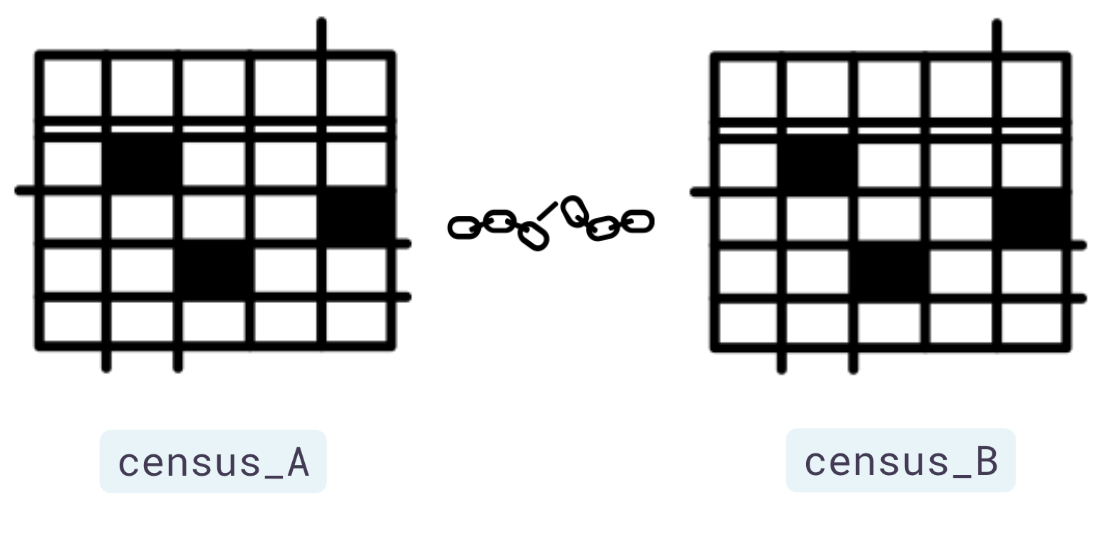
Our potential matches
potential_matches
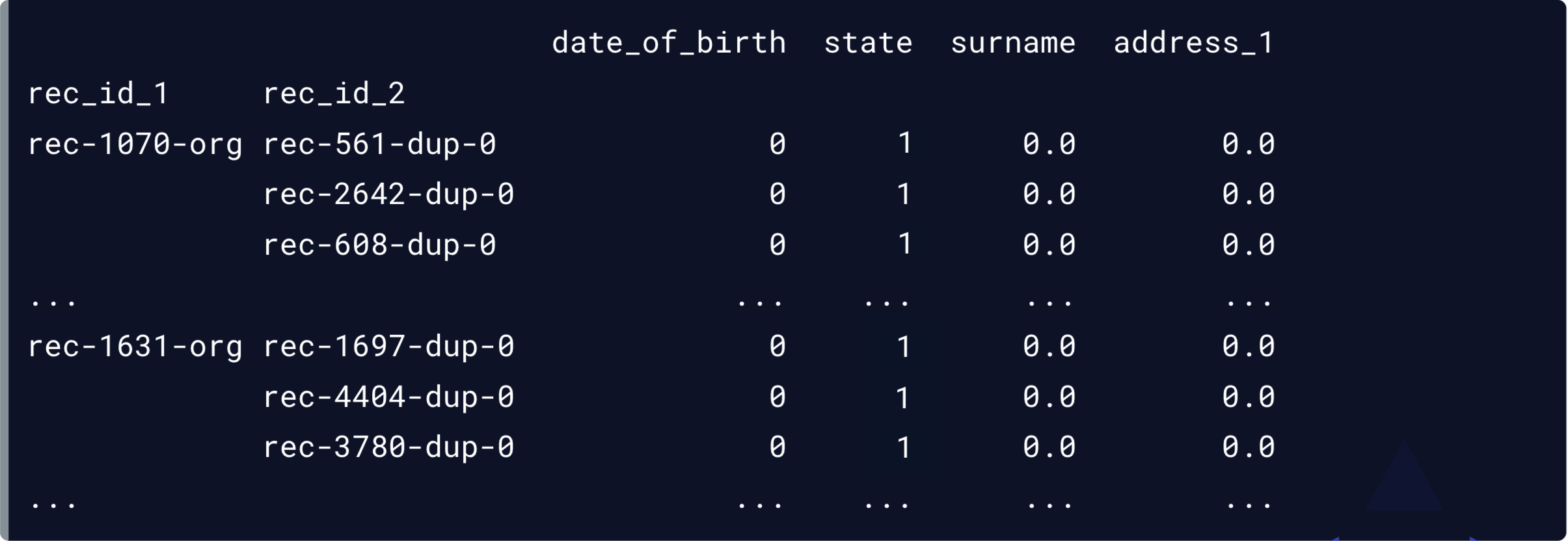
Our potential matches
potential_matches
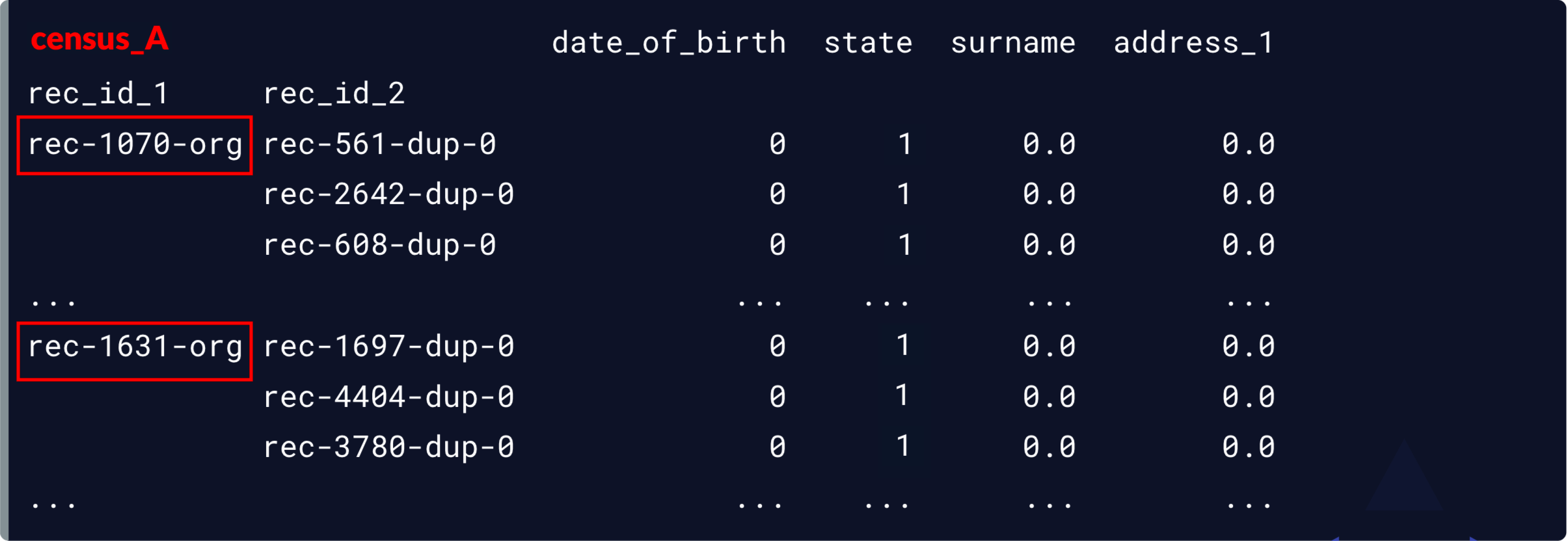
Our potential matches
potential_matches
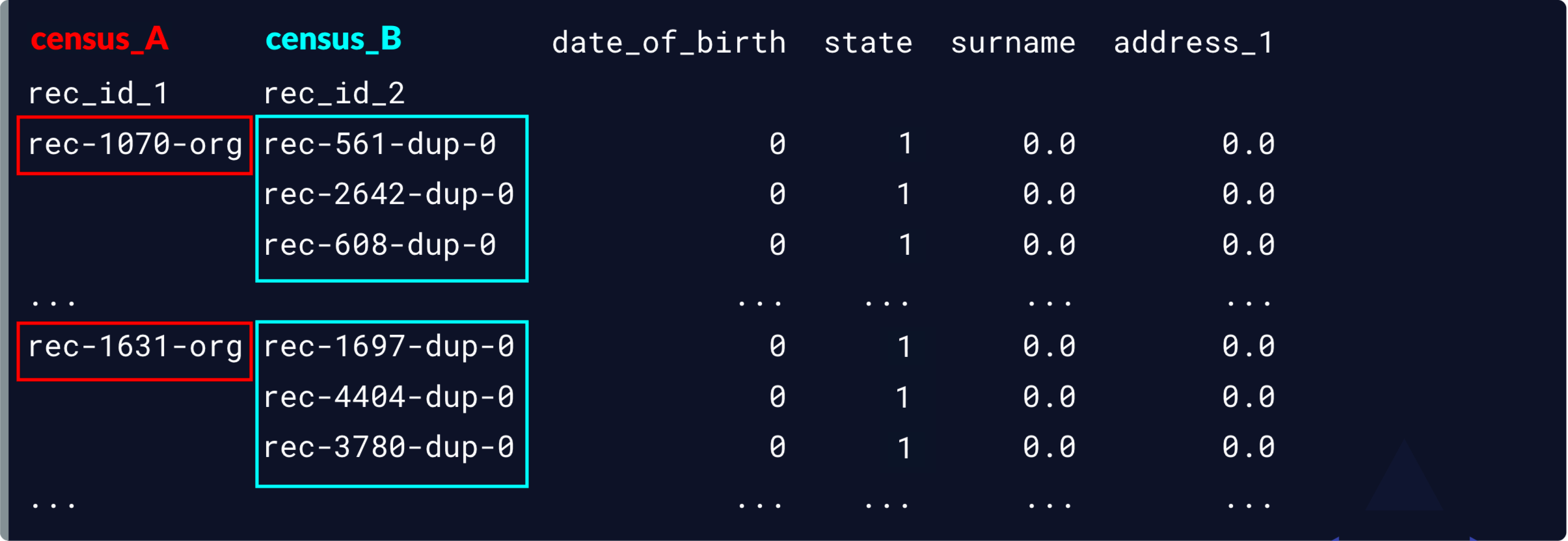
Our potential matches
potential_matches
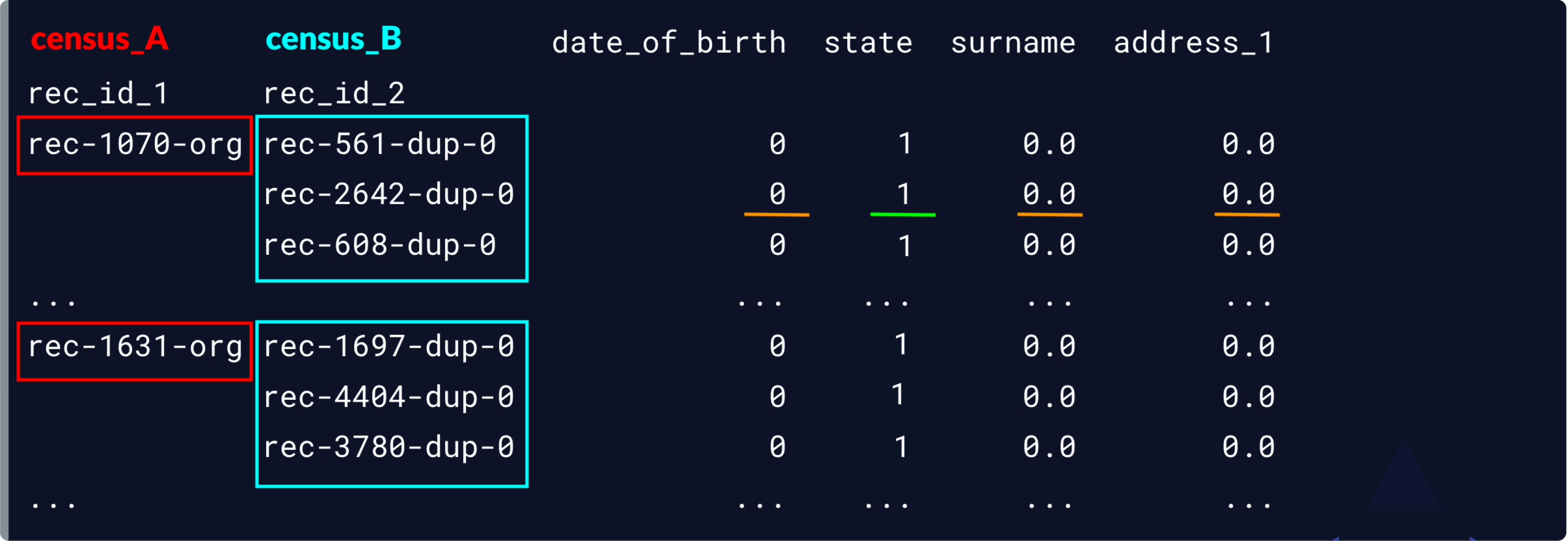
Probable matches
matches = potential_matches[potential_matches.sum(axis = 1) >= 3]
print(matches)

Probable matches
matches = potential_matches[potential_matches.sum(axis = 1) >= 3]
print(matches)

Get the indices
matches.index
MultiIndex(levels=[['rec-1007-org', 'rec-1016-org', 'rec-1054-org', 'rec-1066-org',
'rec-1070-org', 'rec-1075-org', 'rec-1080-org', 'rec-110-org', ...
# Get indices from census_B only
duplicate_rows = matches.index.get_level_values(1)
print(census_B_index)
Index(['rec-2404-dup-0', 'rec-4178-dup-0', 'rec-1054-dup-0', 'rec-4663-dup-0',
'rec-485-dup-0', 'rec-2950-dup-0', 'rec-1234-dup-0', ... , 'rec-299-dup-0'])
Linking DataFrames
# Finding duplicates in census_B census_B_duplicates = census_B[census_B.index.isin(duplicate_rows)]# Finding new rows in census_B census_B_new = census_B[~census_B.index.isin(duplicate_rows)]
# Link the DataFrames!
full_census = pd.concat([census_A, census_B_new])
# Import recordlinkage and generate pairs and compare across columns ... # Generate potential matches potential_matches = compare_cl.compute(full_pairs, census_A, census_B)# Isolate matches with matching values for 3 or more columns matches = potential_matches[potential_matches.sum(axis = 1) >= 3]# Get index for matching census_B rows only duplicate_rows = matches.index.get_level_values(1)# Finding new rows in census_B census_B_new = census_B[~census_B.index.isin(duplicate_rows)]# Link the DataFrames! full_census = pd.concat([census_A, census_B_new])
Let's practice!
Cleaning Data in Python

